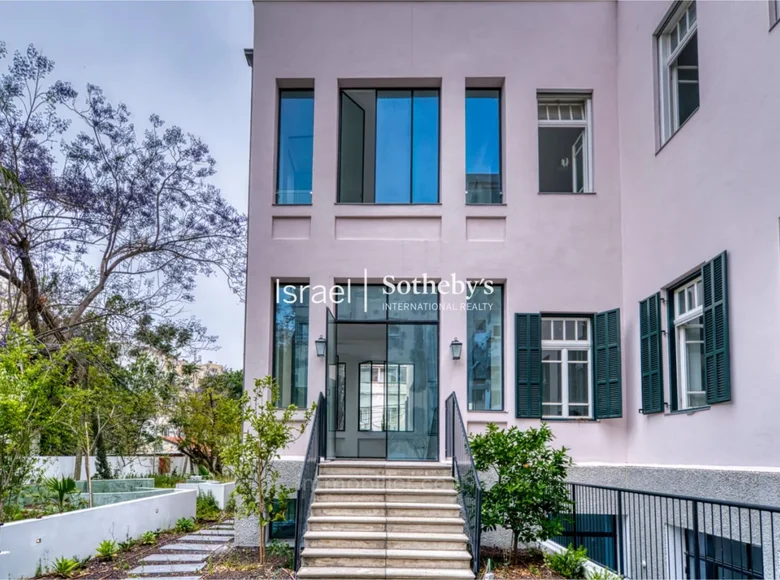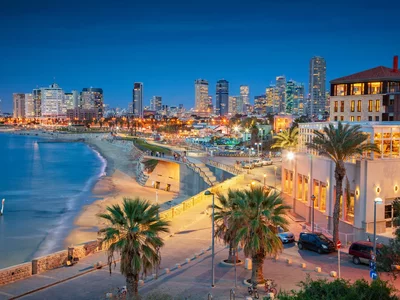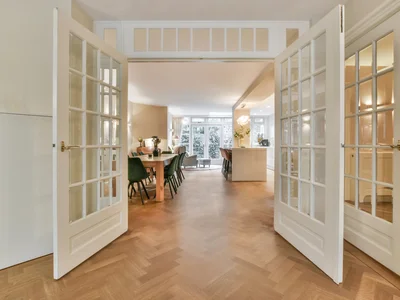This property in Tel Aviv represents an exceptional opportunity for those looking for a unique and historic residence. Built in 1922 by the famous architect Joseph Berlin, the building enjoyed exceptional restoration and reconstruction, preserving its historic charm while integrating modern features. Located on Bialik Street, in the "City Blanche" district, a UNESCO World Heritage site, the property combines cultural heritage and contemporary lifestyle.
- **Terrain**: 11,000 m2
- **Underground**: Approximately 265 m2 of main living space and 353 m2 of technical space, including a laundry room, two safes (Mamad) of 37 m2 each, an underground parking for two vehicles and two English courts of 9 m2 each.
- ** Ground floor**: Approximately 260 m2 of main living area, supplemented by 26 m2 of technical space and two additional covered balconies of 11 m2 each.
- ** Upper floor**: approximately 254 m2 of main living area and 26 m2 of technical space. In addition, three balconies, one of which is 19 m2 and the other two of 13 m2 each, complete this property.
The property also has an elevator serving all floors and extensive outdoor spaces.
- **Backyard**: about 386 m2, with a restored historic gazebo and a leisure pool transformed into a relaxation area. The front courtyard extends over about 195 m2.
- **Terrace on the roof** : 352 m2
The property is currently available for purchase as it is. The layout, including the number and size of the parts, can be customized to meet the buyer's specific preferences and requirements.
History
The building, known as "Beit Hava Shapira", has a rich and diverse history, reflecting the cultural and architectural evolution of Tel Aviv. Built in 1922, it was designed by architect Joseph Berlin in a sober classical style, influenced by the European trends of the time. Despite its splendor, the original plan, which provided for a two-storey building, was only partially realized, leaving the building only the ground floor. The reasons for this deviation remain unclear, as no historical documents have been found to explain it.
Hava Shapira, who named the building, was a pioneering Hebrew writer and critic active in Eastern Europe. Unfortunately, she never lived there because her immigration to Israel had never taken place before her death in Theresienstadt's ghetto in 1943. The building was intended to promote Hebrew literature during the Yishuv period, but it took another turn over the years.
Shortly after its construction, Dr. Gerhard Schreibmann bought the building and founded there the "Sanatorium of Tel Aviv", later renamed "Le Mivraa" at the suggestion of Chaim Nachman Bialik, who lived nearby. In 1930, the property was sold to Ephraim Ismailov, an Iranian Jewish political activist and real estate entrepreneur. He turned her into a family residence. After the death of Ismailov, Rabbi Israel Friedman, Rabbi of Husiatyn, acquired the building and made it his residence and a place of prayer. After his death in 1948, the building continued to serve as a synagogue for its faithful until religious activity in the neighborhood declined.
Left abandoned for decades, the building fell into ruins until restoration began in the 2020s. Today, completely restored and located in a privileged area of the centre of Tel Aviv, this historic site takes over its place in the history of the city, offering a unique opportunity to tell new stories in its walls.



























